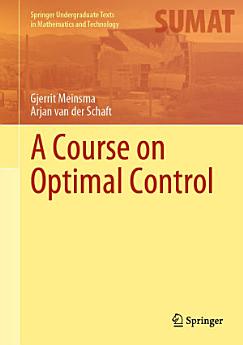A Course on Optimal Control
À propos de cet e-book
À propos de l'auteur
Gjerrit Meinsma received his graduate degree in Applied Mathematics from the University of Twente (Enschede, the Netherlands) in 1989. Four years later, at the same university, he obtained his Ph.D. degree. His postdoctoral work was done at the University of Newcastle with the Electrical Engineering Department. In 1997 he returned to the University of Twente where he now holds a position of senior lecturer. His research interests are in mathematical systems and control theory, and mathematics in general. He has written around 75 papers. In the last 10 years he focuses more on teaching.
Arjan van der Schaft received his undergraduate and Ph.D. degrees in Mathematics from the University of Groningen, the Netherlands, in 1979 and 1983, respectively. In 1982 he joined the Department of Applied Mathematics, University of Twente, Enschede, where he was appointed as a full professor in Mathematical Systems and Control Theory in 2000. In 2005 he returned to Groningen as a full professor in Mathematics. He is Fellow of the Institute of Electrical and Electronics Engineers (IEEE) and Fellow of the International Federation of Automatic Control (IFAC), and invited semi-plenary speaker at the International Congress of Mathematicians (2006). His research interests include mathematical systems theory, nonlinear control, geometric modeling of multi-physics systems, and hybrid systems. His present focus is on network modeling and control of physical systems and their formulation as port-Hamiltonian systems, and applications in complex engineering systems, power networks, and systems biology.






